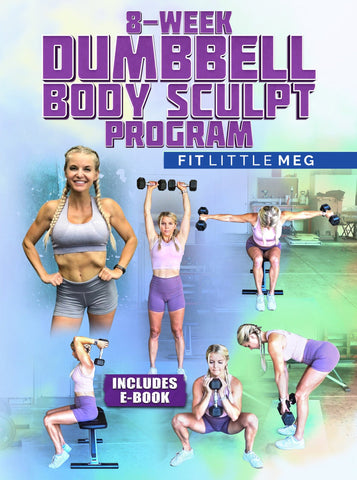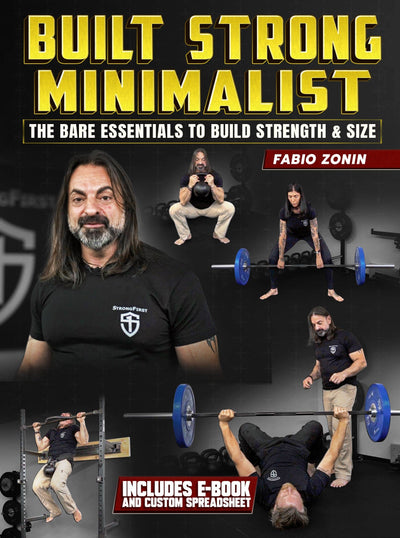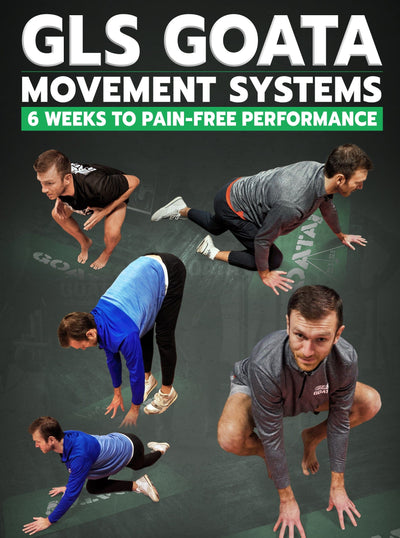A Comprehensive Guide to Kettlebell Strength Workouts
In the realm of strength training, where innovation often takes a backseat to tradition, kettlebell workouts have emerged as a dynamic and effective means of sculpting a robust, resilient physique. Originating in Russia in the 1700s, kettlebells have transcended their humble beginnings as counterweights for market scales to become indispensable tools in modern fitness arsenals. Today we'll take a look at key components to creating a kettlebell strength workout!
What this article covers:
- Understanding the Kettlebell
- The Anatomy of a Kettlebell Strength Workout
- Benefits of Kettlebell Training
- Common Mistakes and How to Avoid Them
Understanding the Kettlebell
A kettlebell resembles a cannonball with a handle, and its design emphasizes functionality and versatility. This unassuming piece of equipment offers a unique advantage over traditional weights due to its off-centered weight distribution, demanding increased stabilization and engaging a broader range of muscles with each movement.
The Anatomy of a Kettlebell Strength Workout
1. Kettlebell Swing:
- Muscles Targeted: Primarily engages the posterior chain, including the glutes, hamstrings, and lower back. Also activates the core, shoulders, and quadriceps.
- Form and Execution:
- Start with a hip-width stance, grasping the kettlebell with both hands.
- Hinge at the hips, allowing the kettlebell to swing back between your legs.
- Explosively thrust your hips forward, swinging the kettlebell to shoulder height.
- Control the descent and repeat for the desired number of repetitions.
- Common Mistakes:
- Avoid squatting during the swing; the power comes from the hips.
- Maintain a neutral spine to prevent lower back strain.
2. Turkish Get-Up:
- Muscles Targeted: Engages the entire body, with a focus on the core, shoulders, hips, and stabilizer muscles.
- Form and Execution:
- Start lying on your back with the kettlebell in one hand, arm extended.
- Roll to the opposite side, using both hands to bring the kettlebell to the chest.
- Move to a kneeling position, then stand up while keeping the kettlebell overhead.
- Reverse the steps to return to the starting position.
- Common Mistakes:
- Maintain a steady pace to ensure proper form; rushing increases the risk of injury.
- Keep the arm holding the kettlebell extended throughout the movement.
3. Goblet Squat:
- Muscles Targeted: Targets the quadriceps, hamstrings, glutes, and core.
- Form and Execution:
- Hold the kettlebell close to your chest with both hands.
- Stand with your feet shoulder-width apart.
- Lower your body into a squat position, keeping the chest up and the back straight.
- Push through the heels to return to the starting position.
- Common Mistakes:
- Ensure knees track over toes to prevent unnecessary stress on the joints.
- Maintain an upright torso throughout the movement.
4. Kettlebell Deadlift:
- Muscles Targeted: Primarily works the hamstrings, glutes, and lower back.
- Form and Execution:
- Place the kettlebell between your feet with a hip-width stance.
- Hinge at the hips, keeping the back straight, and grip the kettlebell with both hands.
- Stand up by thrusting your hips forward and squeezing your glutes.
- Lower the kettlebell back to the ground with control.
- Common Mistakes:
- Avoid rounding the back during the movement to prevent lower back strain.
- Engage the core to stabilize the spine.
5. Kettlebell Snatch:
- Muscles Targeted: Engages the entire body, with emphasis on the shoulders, back, and core.
- Form and Execution:
- Begin with a hip-width stance and the kettlebell between your legs.
- Swing the kettlebell between your legs, then explosively extend the hips and knees.
- Use the momentum to pull the kettlebell straight up, keeping it close to the body.
- Lock out the arm overhead and control the descent.
- Common Mistakes:
- Master the swing before attempting the snatch to ensure proper hip engagement.
- Keep the arm straight during the upward phase to avoid unnecessary stress on the elbow.
Incorporating these exercises into your kettlebell strength workout provides a well-rounded and challenging routine. Remember to start with a weight that allows for proper form, gradually progressing as your strength and technique improve. Consult with a fitness professional if you're new to kettlebell training to ensure a safe and effective workout.
Benefits of Kettlebell Training
Functional Strength:
Kettlebell exercises mimic real-life movements, enhancing functional strength and promoting better performance in daily activities.
Cardiovascular Endurance:
The dynamic nature of kettlebell workouts elevates the heart rate, turning strength training sessions into cardiovascular workouts that improve endurance.
Efficiency and Time Management:
Kettlebell workouts often involve compound movements, targeting multiple muscle groups simultaneously, allowing for efficient and time-effective training sessions.
Improved Posture and Stability:
The need to stabilize the body during kettlebell exercises contributes to improved posture and overall stability, reducing the risk of injuries.
Enhanced Grip Strength:
The kettlebell handle challenges grip strength, benefiting athletes in various sports and everyday activities that require a strong and secure grip.
Variations to Spice Up Your Routine:
Double Kettlebell Exercises:
Performing traditional exercises like squats, swings, or lunges with a kettlebell in each hand adds an extra layer of difficulty and engages more muscle groups.
Kettlebell Juggling:
For the advanced practitioner, kettlebell juggling involves flipping, spinning, and tossing the kettlebell in controlled patterns, challenging coordination and reflexes.
Bottoms-Up Kettlebell Press:
In this variation, the kettlebell is held upside down, challenging shoulder stability and grip strength while requiring a controlled and deliberate pressing motion.
Common Mistakes and How to Avoid Them
Overarching the Back:
Maintaining a neutral spine is crucial. Overarching the back during movements like swings or deadlifts can lead to lower back injuries. Focus on hinging at the hips and maintaining a strong core.
Using Too Much Weight:
Start with a manageable weight to perfect your form before gradually increasing. Using excessively heavy kettlebells can compromise technique and increase the risk of injury
Neglecting Warm-up and Cool Down:
Dynamic warm-ups are essential to prepare the body for the demands of kettlebell training, while static stretches and foam rolling aid in recovery and flexibility.
Kettlebell strength workouts offer a refreshing departure from traditional training methods, combining strength, cardiovascular fitness, and functional movement in a single, compact package. Whether you're a seasoned athlete or a fitness novice, the versatility of kettlebell exercises provides a pathway to improved strength, agility, and overall well-being. So, pick up a kettlebell, master the fundamentals, and unlock a new dimension of physical prowess.
Did you find the blog helpful? If so, consider checking out other guides:
- Mastering the Art of Kettlebell Complexity
- Mastering the Art of Kettlebell Movement
- A Deep Dive into Functional Kettlebell Exercises
- A Comprehensive Exploration of Their Effects on the Body
- Comprehensive Insights into Single Kettlebell Workouts for Mass
- The Muscle-Building Magic of Kettlebell Swings
- Russian Twists with Kettlebell
- The Russian Kettlebell Swing
- The American Kettlebell Swing
- The World of Russian Kettlebell Workouts
- Mastering the Russian Kettlebell Challenge
- The Double Kettlebell Russian Swing and Its Variations
- Full-Body Kettlebell Workouts
- The Power of Kettlebell Benefits
- Exploring the Essence of Kettlebells





